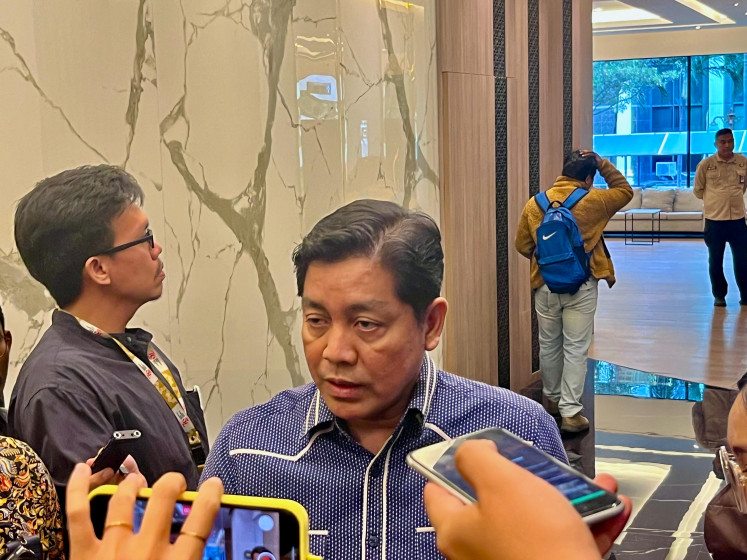Popular Reads
Top Results
Can't find what you're looking for?
View all search resultsPopular Reads
Top Results
Can't find what you're looking for?
View all search resultsWhy efforts to eradicate ‘pribumi’-‘Tionghoa’ tension fail
JP/DONIndonesia’s multicultural, multiethnic, multireligious nature results in a diverse and vibrant society
Change text size
Gift Premium Articles
to Anyone
JP/DON
Indonesia’s multicultural, multiethnic, multireligious nature results in a diverse and vibrant society. Unfortunately, this diversity also results in numerous protracted interethnic tensions. Here, I want to shed some light on why the Indonesian government has failed to eradicate interethnic antagonism between pribumi (indigenous Indonesians) and Tionghoa (Chinese-Indonesians).
Economic and social inequalities along pribumi-Tionghoa ethnic lines are the symptoms, not the source, of this antagonism. Fundamental sociocultural differences between the two groups are the sources of these protracted interethnic tensions.
Pribumi-Tionghoa antagonism has deep historical roots, driven by cultural differences that have resulted in significant economic, political and social inequalities. Under Dutch colonial rule, Tionghoa enjoyed preferential treatment over the indigenous communities and controlled the majority of the trade sectors. After independence, their fate was reversed, and for about 50 years they suffered significant political, cultural and social discrimination. Still, they were allowed to participate in business.
Currently, institutionalized discrimination against Tionghoa has been removed, and they dominate Indonesia’s private economy. Thanks to their wealth, they also increasingly influence the political arena. Chinese-Indonesians’ dominance, which has resulted in Indonesian society being stratified along Tionghoa-pribumi ethnic lines, is not welcomed by most pribumi.
Numerous indigenous Indonesians regard Tionghoa as a group that has obtained wealth and power in dubious ways, fostering hostile, at times violent, feelings towards Tionghoa. A survey from the Wahid Foundation in 2017 confirmed that the Tionghoa are among the most disliked groups in Indonesia along with communists, nonbelievers, LGBT and Jewish groups.
The May 1998 riots, predominantly targeting Tionghoa communities, and the conflict in Tanjung Balai are just two examples of how underlying racial tensions have boiled over. A more nuanced case of underlying interethnic antagonism is the one that resulted in former Jakarta governor Basuki “Ahok” Tjahaja Purnama being found guilty of blasphemy and jailed for two years. Obviously, the government is aware of these interethnic tensions and has made numerous efforts to eradicate them.
Why then has Jakarta failed to normalize pribumi-Tionghoa relations? The answer is that the Indonesian government has not addressed the source of the tensions: fundamental social and cultural differences that result in Tionghoa consistently outperforming pribumi in professional and business areas.
Significantly, pribumi recognized this situation in a recent survey by the Yusof Ishak Institute, in which 68.1 percent of indigenous Indonesian respondents agreed that Tionghoa “have a natural talent for success in making money” and 48.7 percent agreed that Tionghoa “have more opportunities in life” than indigenous Indonesians.
It is true that Tionghoa currently have more success in making money than pribumi. This is not as a result of differences in their nature, but rather differences in their nurture, i.e. cultural and social upbringing. Let me expand on what these cultural differences are and why they are sources of interethnic antagonism.
While both Tionghoa and pribumi have rich cultural values and complex social norms, their objectives are fundamentally different. Pribumi put significant emphasis on, and time into, developing cultural-religious and social values, such as having active family and social lives, learning Islamic history and law, being soft mannered and numerous other intangible skills.
These practices and values are taught from a very early age in families, schools and society and are ultimately aimed at instilling pribumi with strong Islamic values and objectives at the personal, family and social levels.
These valuable principles and behaviors are intended to foment the individual’s moral and spiritual growth, not so much his or her competitiveness in the professional and business environments.
As for Tionghoa, their nurture is focused on developing socially adapted individuals with strong personal values as well, but they emphasize strong performance in education and a successful material life. This results in nurture that is more practical, stricter about learning and discipline, and with stronger emphasis on economic success.
Tionghoa provide their children with the tools and skills necessary to facilitate their success in their professional and business lives. These sociocultural differences result in pribumi’s attitudes, values and goals not being as competitive as those of Tionghoa when it comes to achieving economic and material success on a level playing field.
You could argue that both pribumi and Tionghoa are successful in their own ways and that their successes should not be measured only in economic and material terms. This would be correct if the majority of pribumi really yearn only for intangible and spiritual achievements. But they do not. They yearn for economic and material success too.
As a result, the conflict between Tionghoa and pribumi arises because a significant number of pribumi want to achieve similar material success to Tionghoa, despite the comparatively uncompetitive nurture they received. Given that Tionghoa are much better prepared culturally for material success, pribumi consistently fall behind in this field.
This significant economic success dislocation along the Tionghoa-pribumi ethnic lines results in the frustration of numerous pribumi — frustration that in some cases is turned against Tionghoa in antagonistic ways. More importantly, because of the deep-rooted nature of the sociocultural differences, it will be a complex and difficult challenge to narrow the success gap between the pribumi and Tionghoa, and antagonism between the two groups will continue.
Cosmetic policies to reduce this tension, such replacing the terms Cina or Tjina with a more positive Tionghoa will not have any real impact in defusing the Tionghoa-pribumi tensions. This is because they do not address the source of the tensions: fundamental social and cultural differences. A better understanding of Tionghoa-pribumi relations will hopefully help in the design of more effective policies to defuse interethnic tensions and to strengthen Indonesia’s social cohesion.
___________________
Visiting professor at Muhammadiyah University in Yogyakarta with a PhD in politics and international studies from the University of Cambridge.










